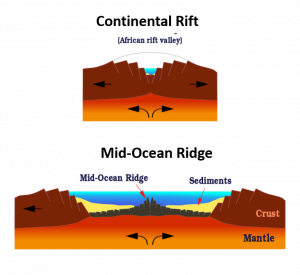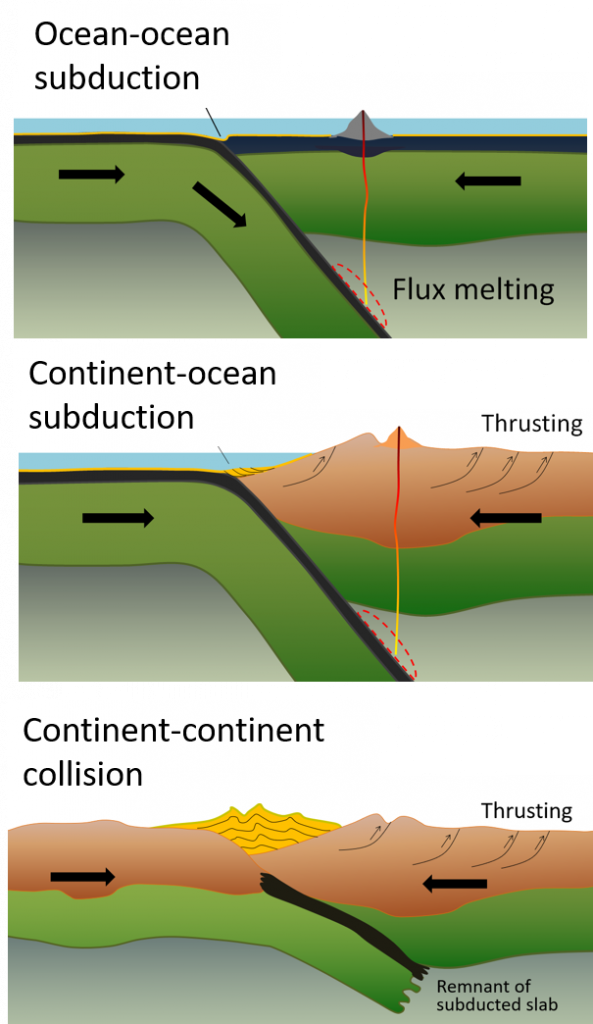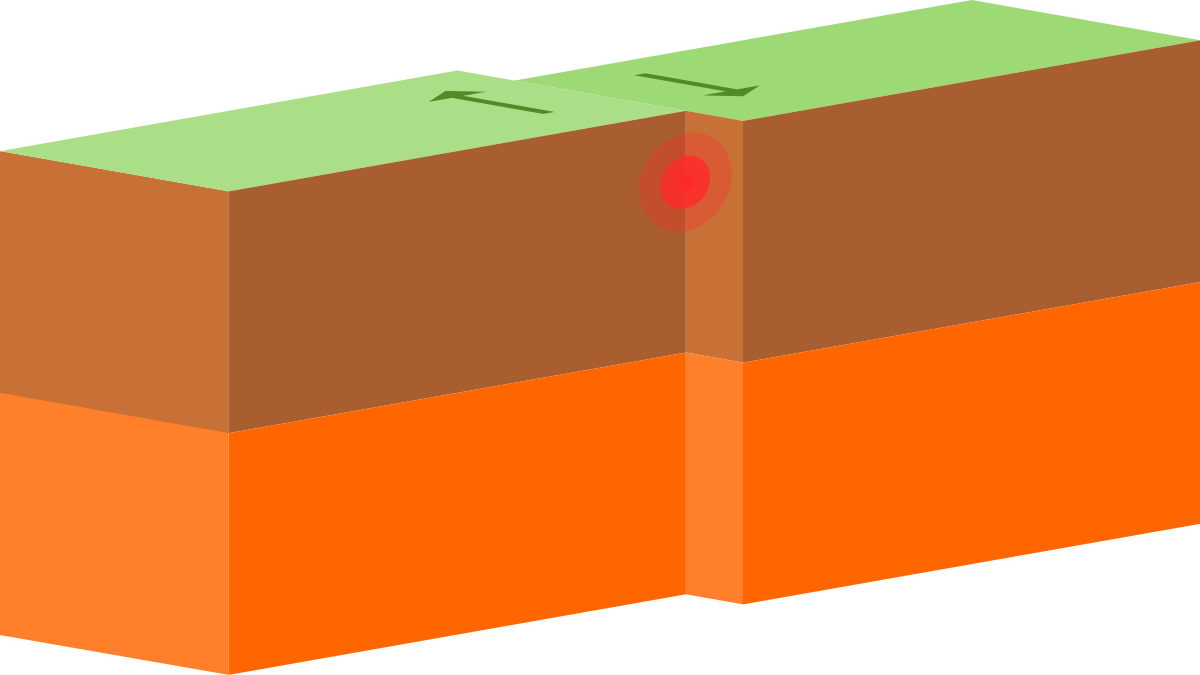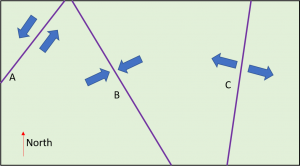19 Motion at Plate Boundaries
Elizabeth Johnson
Learning Objectives
Students will be able to:
- Interpret the type of plate boundary based upon motion shown in cross-sectional or map view.
Review: The Three Types of Plate Boundaries
We already investigated the topography of plate boundaries in a previous chapter: Applications: Plate Tectonics
There are three types of plate boundaries: convergent, divergent, and transform boundaries. We can see the relative motion of these boundaries in cross-sections, or slices through Earth:



By domdomegg – Own work, CC BY 4.0, Link
Figure 3. Transform plate boundary, showing plates moving alongside each other.
- At divergent boundaries, plates move away from each other.
- At convergent boundaries, plates move towards each other.
- At transform boundaries, plates move alongside each other.
We can also look at these plate boundaries in map view (looking down on the boundary from space). It is possible to determine the type of plate boundary in map view, if the plate motions are represented by arrows.


